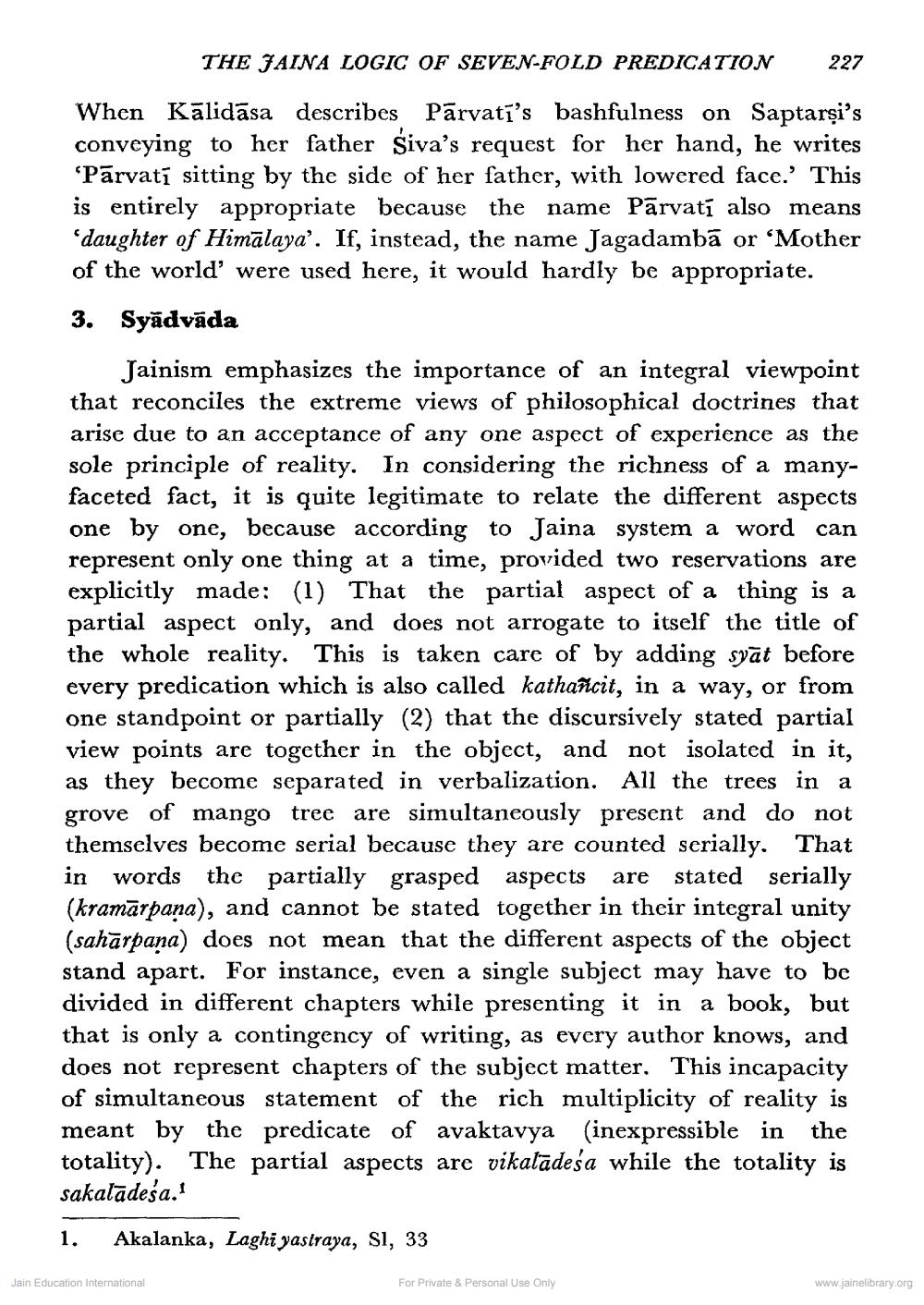________________
THE JAINA LOGIC OF SEVEN-FOLD PREDICATION
227
When Kālidāsa describes Pārvatī's bashfulness on Saptarși's conveying to her father Siva's request for her hand, he writes
Pārvatī sitting by the side of her father, with lowered face.' This is entirely appropriate because the name Pārvatī also means daughter of Himālaya'. If, instead, the name Jagadambā or ‘Mother of the world' were used here, it would hardly be appropriate. 3. Syādvāda
Jainism emphasizes the importance of an integral viewpoint that reconciles the extreme views of philosophical doctrines that arise due to an acceptance of any one aspect of experience as the sole principle of reality. In considering the richness of a manyfaceted fact, it is quite legitimate to relate the different aspects one by one, because according to Jaina system a word can represent only one thing at a time, provided two reservations are explicitly made: (1) That the partial aspect of a thing is a partial aspect only, and does not arrogate to itself the title of the whole reality. This is taken care of by adding syāt before every predication which is also called kathancit, in a way, or from one standpoint or partially (2) that the discursively stated partial view points are together in the object, and not isolated in it, as they become separated in verbalization. All the trees in a grove of mango tree are simultaneously present and do not themselves become serial because they are counted serially. That in words the partially grasped aspects are stated serially (kramārpana), and cannot be stated together in their integral un (sahārpana) does not mean that the different aspects of the object stand apart. For instance, even a single subject may have to be divided in different chapters while presenting it in a book, but that is only a contingency of writing, as every author knows, and does not represent chapters of the subject matter. This incapacity of simultaneous statement of the rich multiplicity of reality is meant by the predicate of avaktavya (inexpressible in the totality). The partial aspects are vikatādeśa while the totality is sakalādesa.
1.
Akalanka, Laghi yastraya, Si, 33
Jain Education International
For Private & Personal Use Only
www.jainelibrary.org




